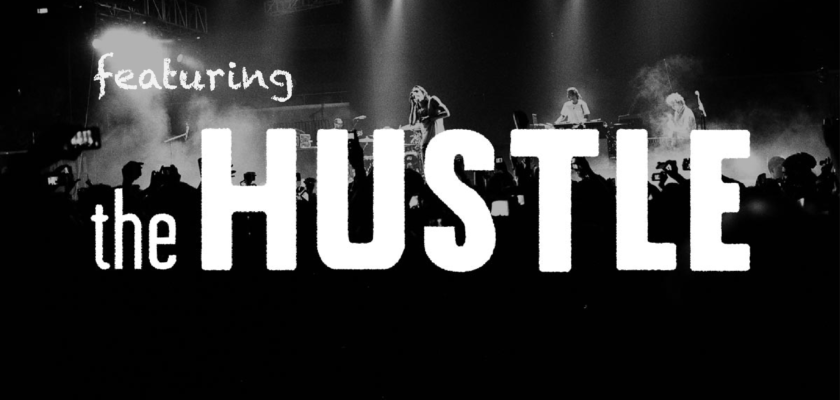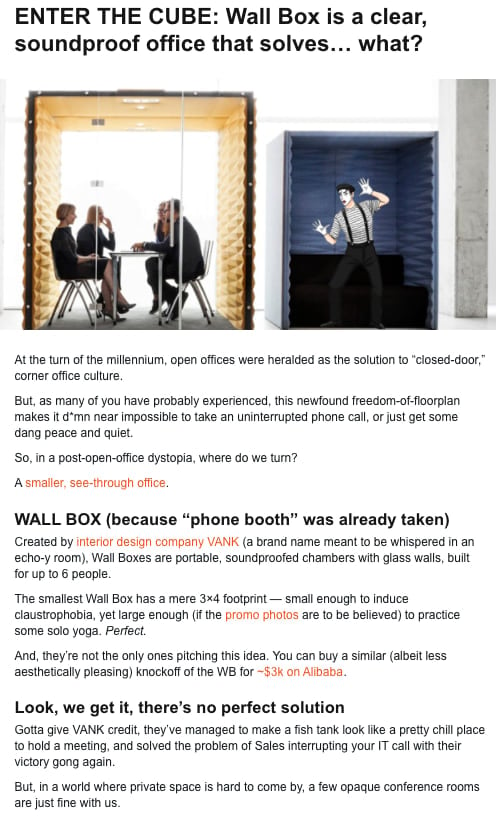It’s Time to End the Execute vs Innovate Debate

At the start of the new year, The Hustle’s John Havel reflected on a story from the media company’s early days. CEO Sam Parr told him to stop trying to perfect something and to ship what was ‘good enough’.
(Read: John, nobody is going to look twice at that website footer, please stop obsessing over it.)
Like most people, Sam and John ended up meeting in the middle. Ever since, their team has been committed to investing planning time early, producing a first version as quickly as possible, then adjusting later to feedback accordingly.
To see what other people thought about the trade off, John posed a questions to the popular newsletter’s readers: Is it better to innovate or execute? At Taplytics, we see variations of this question every day, so eagerly jumped into the conversation, and had a follow up chat with John to hear about his stance on the execute vs. innovate debate.
Learn how companies like The Hustle execute and innovate through experimentation in our Mobile Experimentation Guide.
How Hustlers Execute
John shared with us that there’s an art to an execution-first strategy, which has three key elements:
- Operate with a “lean, agile MVP mentality” to ship a well thought out first version of the product.
- Once there is a proof of concept that starts generating results, bring this validated version to internal decision makers to gain buy in and put some momentum behind it.
- Continually gather and implement user feedback in a way that mindfully maintains the product’s original intention.
The real MVP
“Early on in our editorial strategy, we said ‘ok we need to write content, but it’s going to take a long time to do it.’ But Sam’s perspective was that ‘even if you spend a month working on something, if no one sees it then it’s not worth it’”
The Hustle adopted the mentality of the lean startup, and not just in its name. The team mapped out where they wanted to be eventually, and from there decided on the smallest thing they could do at the time to take the first step in the right direction.
Once you have released your first version, you can gauge interest and see if your prediction was right. You can then move forward accordingly and either continue down the path you originally planned, or pivot to get on the right one. Unfortunately, a common roadblock that keeps teams from hitting the “execute” stage and stuck in the “innovate” one is the internal development and approval process. The key to overcoming this and gaining buy in is demonstrating early value with the MVP you have created. This can only work if you’ve spent minimal time and resources producing that first version.
The secret to internal buy-in
John laughed as he recalled a situation at a previous job where his team was tasked with re-creating the logo. They came up with their best version, which the CEO thought wasn’t good enough. They then proceeded to spend $15K in 3 months with a really good logo designer who came up with really bad ideas. While his ideas weren’t great, the way that he presented his ideas was. He started off with very basic ideas, then sent over decks that showed how the ideas could progress. He then kept narrowing it down to 40, 20, 10, 5 variations. What was hilarious is that he ended up pitching the original design, which the CEO loved.
“To get buy in from stakeholders, they all need to feel like they’re contributing feedback. Sometimes, egos get involved and you need to play to that. Even if you know that what you have is exactly what you’re looking for, make it a little shi**ier than you would have so they can point out obvious improvements. Once you make those “changes”, they’ll feel good about being part of the process. The psychology of any type of development is so important, as is the way you present ideas and get buy in.”
This, or at least some version of this, is how The Hustle operates and tries new ideas: they keep their end goals and ideas a secret. In John’s experience, this is the best way to execute and get buy in for your ideas.
“Take a first step with your MVP, with the perspective that if you can justify it in some way and see results, then people will get excited about it and come up with ideas about what could be done next.”
The real benefit in this strategy is that you will be able to develop things quickly without a large use of resources. Once your ideas show some promise and are validated by the early users, then other people in the company, especially the decision makers, will get excited about it, and their minds naturally start going exactly where you want them to go.
At that point, you will have the green light to develop your product the way you want it. Keep in mind, however, that the most important thing there is to not invest a tonne of time. All you need is a little glimpse of opportunity that you can point to, and you’ll be well on your way to that internal buy in. For The Hustle’s newsletter, that means engagement in terms of clicks or qualitative feedback.
Collect feedback…but stay true to yourself
The final piece of this puzzle is collecting user feedback, which is key to the execute vs innovate argument. As long as you’re staying agile and keeping an iterative mindset, then the execute strategy will serve you well.
While the way that The Hustle collects their feedback is conventional for a newsletter, their mindset is very unique; they take all of their feedback with a great big grain of salt.
“Here’s an analogy – we love music here, it’s a good influence (We bonded early, Sam and I, over the Black Keys) If you’re an artist, you have to figure out what sound you have, and your vibe. Once you do, you have to be honest and authentic to that. If you try to listen to what other people are saying and change, it’s just going to ruin the authenticity”
At The Hustle, this is especially important, due to the colorful nature of the newsletter. The team takes pride in developing for themselves, not the hundreds of thousands of readers. This way, it doesn’t feel like work and they’re able to produce quickly because they know what they’re each interested in and capable of.
There will be haters, but there are also a lot people who love what you’re doing. As long as there is a balance, you’re good! If The Hustle’s MVP had proven to be a complete failure, and all of the feedback was negative, then they would have had to change something.

Get Hustlin’
It is this open mindset that makes the execute-first mentality possible at The Hustle, and many organizations alike. Dedication to operating quickly, proving the concept and adjusting appropriately to user feedback is what makes these reactive companies successful and loved by so many people.
PS if you don’t already subscribe to the Hustle, give it a try. We promise you’ll laugh out loud at your desk at least once a week (they didn’t put us up to asking, we swear!)
“For a daily news email that’s funnier, punnier, less political, more relevant, and 200% guaranteed to make you sound more interesting at dinner parties and/or during Tinder dates, you HAVE to get on board with The Hustle. Like, now.”

